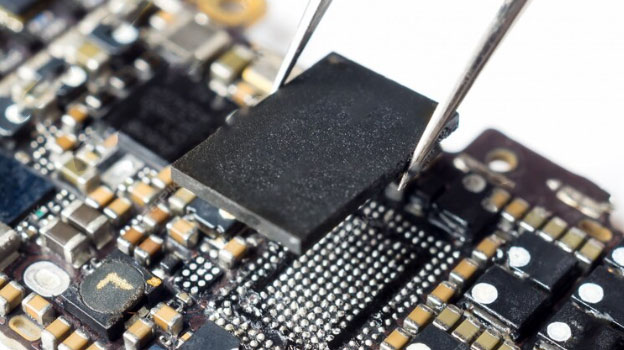
What do you consider more important – fast read times or fast write times? It depends and NOR and NAND flash memory are the two different storage technologies that are commonly used today. What makes them different is the type of logic gate structures used. Each type describes how their memory cells are organized.
NOR Flash
With NOR flash memory, one end of each memory cell is connected to the source line. The other end is attached to a bit line, which resembles a NOR gate.
NAND Flash
With NAND flash memory, several of the memory cells are connected in a parallel series like a NAND gate.
But what exactly does this mean?
Well, let’s dive a bit deeper. NOR flash architecture addresses the entire memory range and has access to every byte within it. This means reading the data is performed faster. The other side of the coin is that NOR flash takes longer to erase and write new data because of its larger cell size. This also makes NOR flash memory more expensive.
By comparison, NAND flash memory is quicker to erase and write. But it is slower to read. It’s also much smaller than NOR flash, but less expensive. Plus, although it is smaller in size than NOR flash, NAND flash has a higher memory capacity than NOR flash.
But there’s more…
The power requirements differ with each. NOR flash memory requires more power while NAND flash needs less. Well, that is when you firsat fire it up, but once it is operational, NOR flash has a lower standby power consumption than NAND. This makes NOR flash memory better suited for random reads for memory. But NAND flash is more efficient at writing, erasing, and sequential reads.
The breakdown continues…
In practice, NOR flash is the common choice for low-capacity and high reliability applications. Think mobile phones and medical devices.
NAND is best for high memory capacity applications that don’t require fast read times. Think digital cameras, SSDs, USH flash drives, and other SD card compatible devices.
Also, keep in mind that some devices rely on both NOR and NAND flash memory.
To review…
NOR Flash Advantages
faster to read
has a lower standby power requirement
best for random reads
great for low capacity, high-reliability applications (mobile phones, medical devices)
NAND Flash Advantages
faster to erase and write
smaller, less expensive
has a higher memory capacity
more efficient at writes, erasures, sequential reads
great for high memory capacity applications (digital cameras, SSDs, USB flash drives, other SD cards)
NOR Flash Disadvantages
slower to erase and write new data
more expensive
needs more power to turn on
NAND Flash Disadvantages
slower to read
much smaller
higher standby power consumption
Moving on…
Then there is the SSD vs eMMC battle. Embedded MultiMediaCard (eMMC) and Solid-State Drive (SSD) storage do share a lot of similarities. Both use NAND flash memory, for example. However, SSDs usually deliver superior performance and are available in larger capacities for bulk storage.
But that’s a whole other story I’ll save for another day.
